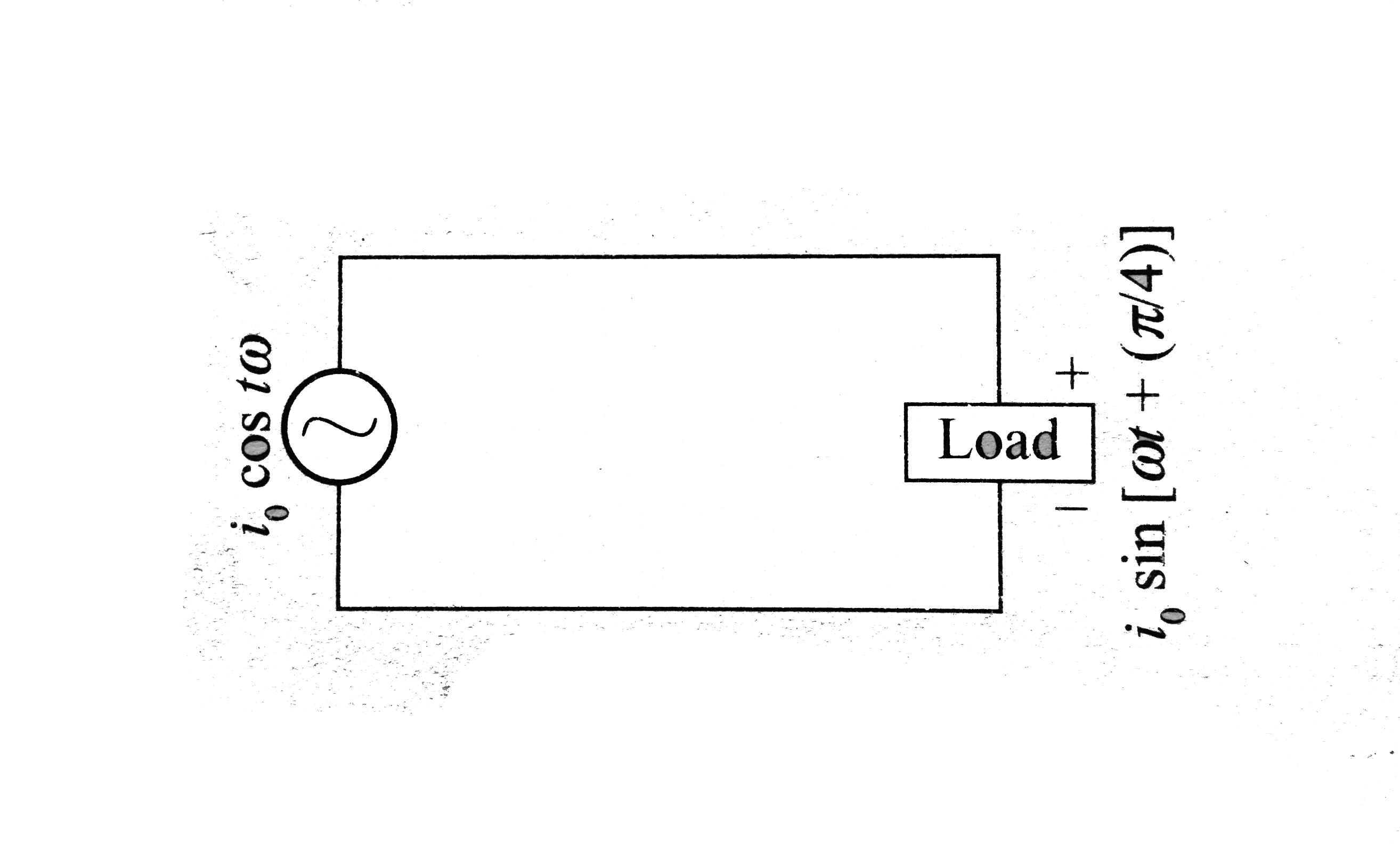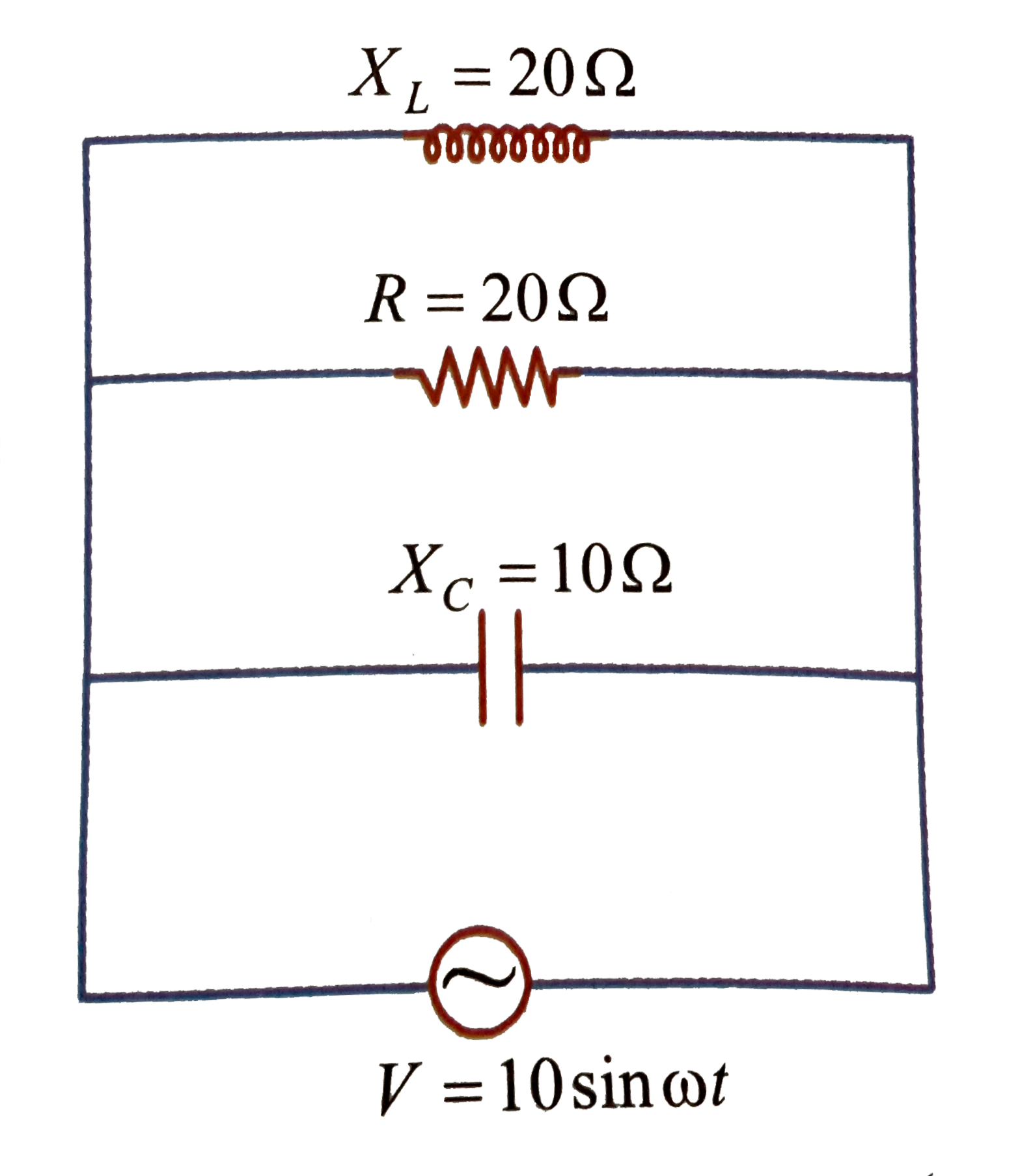A current source sends a current I=I0cosωt. When connected across an unknown load, it gives a voltage output of V=V0sin[ωt+π4] across that load. Then the voltage across the current source may be brought in phase with the current through it by
![A current source sends a current I = I(0) cos omega t. When connected across an unknown load, it gives a voltage output of V = V(0) sin [ omegat + (pi)/(4) ] across that load. Then the voltage across the current source may be brought in phase with the current through it by](https://d10lpgp6xz60nq.cloudfront.net/physics_images/BRL_JEE_MN_ADV_PHY_XII_V02_C04_E02_032_Q01.png)
connecting an inductor in series with the load
connecting a capacitor in series with the load
connecting an inductor in parallel with the load
connecting a capacitor in parallel with the load
The correct Answer is:A
V=V0sin[(ωt+π/4)]=V0cos[ωt−(π/4)]

Since V lags current, an inductor can bring it in phase with current.
Similar Questions
A current source sends a current I=(i0)cos(ωt), When connected across an unknown load, it gives a voltages output of v=v0sin[ωt+(π/4)] across that load. Then the voltage across the current source may bebroaught in phase with the current through it by
 View Solution
View SolutionAn alternating voltage V=V0sinωt is applied across a circuit. As a result, a current I=I0sin(ωt–p2) flows in it. The power consumed per cycle is
View Solution
Knowledge Check
- Question 1 - Select One
A current source sends a current I=(i0)cos(ωt), When connected across an unknown load, it gives a voltages output of v=v0sin[ωt+(π/4)] across that load. Then the voltage across the current source may bebroaught in phase with the current through it by
 AConnecting an inductor in series with the loadBConnecting an capactor in series with the loadCConnecting an inductor in parallel with the loadDConnecting an capactor in parallel with the load
AConnecting an inductor in series with the loadBConnecting an capactor in series with the loadCConnecting an inductor in parallel with the loadDConnecting an capactor in parallel with the load - Question 2 - Select One
An alternative voltage V=10sinωt (in volts) is applied across a parallel arrangement as shown current (in A) through the source is best described by
 Ai=0.05sinωtBi=0.7sin(ωt+π6)Ci=0.7sin(ωt+π4)Di=0.05sin(ωt+π2)
Ai=0.05sinωtBi=0.7sin(ωt+π6)Ci=0.7sin(ωt+π4)Di=0.05sin(ωt+π2) - Question 3 - Select One
If an alternating voltage V=V_0 sin omegat is applied across an inductance I, the current through the inductance will be
AI=I0sinωtBI=I0sin(ωt+π/2)CI=I0sin(ωt+π/2)DI=I0sin(ωt+π)
AC source of voltage of V=V0sin(100t) is connected with box which contain ether RL of RC circuit. If voltage leads the current by phase π/4 then :
View SolutionIf an alternating voltage V=V_0 sin omegat is applied across an inductance I, the current through the inductance will be
View SolutionIn the question number 44, the phase difference between the voltage across the source and current is
View SolutionIn the question number 44, the phase difference between the voltage across the source and current is
View SolutionAC source of voltage of V=V0sin(100t) is connected with box which contain ether RL of RC circuit. If voltage leads the current by phase π/4 then :
View Solution
